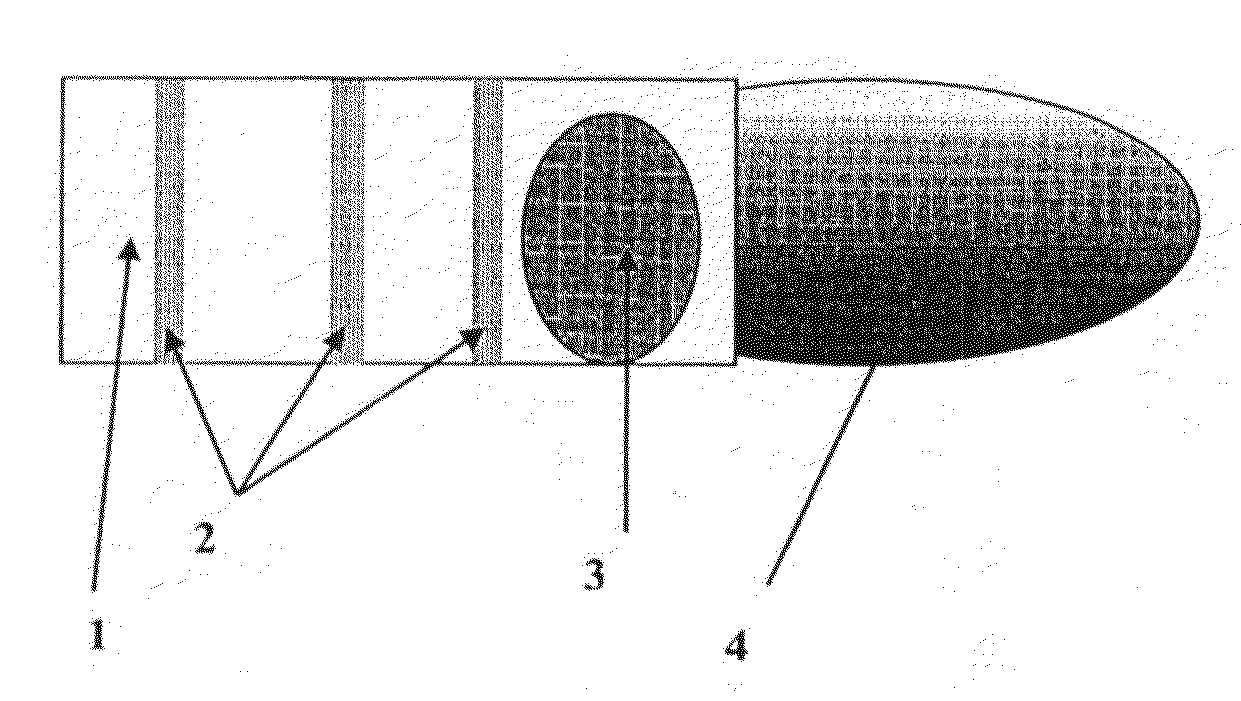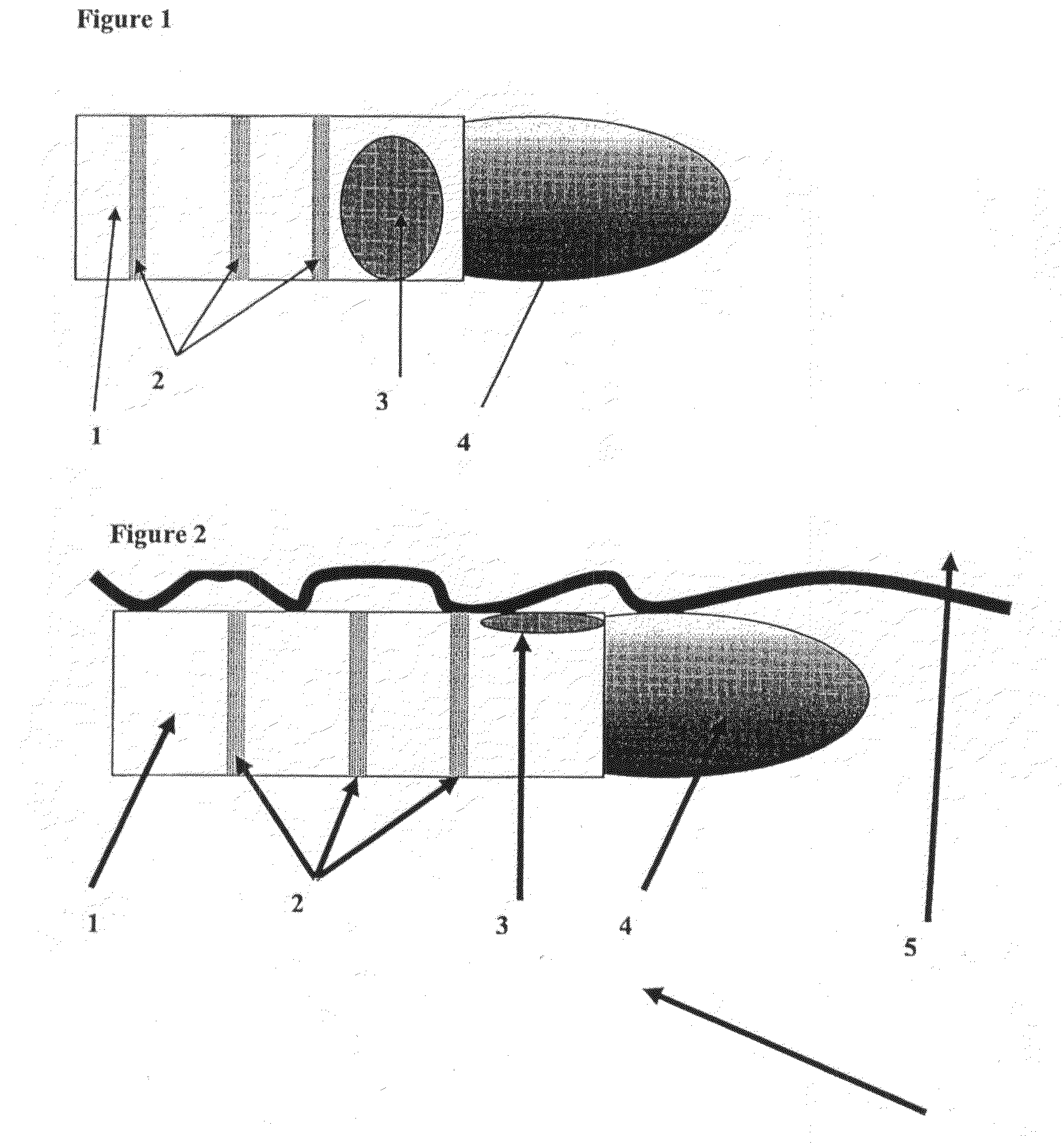RF Ablation Catheter with Side-Eye Infrared Imager
a technology of infrared imager and catheter, which is applied in the field of endocardial rf catheter ablation, can solve the problems of contact stagnant blood, poor placement, stenosis of the pv,
- Summary
- Abstract
- Description
- Claims
- Application Information
AI Technical Summary
Benefits of technology
Problems solved by technology
Method used
Image
Examples
Embodiment Construction
[0036]This device operates with the infrared imaging system as described in U.S. Pat. No. 6,178,346. As seen in FIG. 3, the imaging system has been modified through the use of a prism (20) which directs both illumination and returned reflected light in about a 90 deg angle to permit viewing on the side of the catheter.
[0037]As seen in FIG. 1, the ablation catheter (1) contains three rings (2) to record electrograms of underlying tissue. Between the distal end of the electrode (4) and the first ring is located the side-eye imager (3). In FIG. 2, the catheter is rotated about 90 deg and placed against tissue (5).
[0038]As the side-eye imager is placed against tissue, the signal amplitude returning to the imaging bundle will dramatically increase. This will be seen on the infrared image as a high-detail image. Alternatively, the signal count could be used to construct a graphic, such as a bar which goes up to maximal level once the side-eye imager is seated on tissue. Since signal count...
PUM
 Login to View More
Login to View More Abstract
Description
Claims
Application Information
 Login to View More
Login to View More - R&D
- Intellectual Property
- Life Sciences
- Materials
- Tech Scout
- Unparalleled Data Quality
- Higher Quality Content
- 60% Fewer Hallucinations
Browse by: Latest US Patents, China's latest patents, Technical Efficacy Thesaurus, Application Domain, Technology Topic, Popular Technical Reports.
© 2025 PatSnap. All rights reserved.Legal|Privacy policy|Modern Slavery Act Transparency Statement|Sitemap|About US| Contact US: help@patsnap.com



